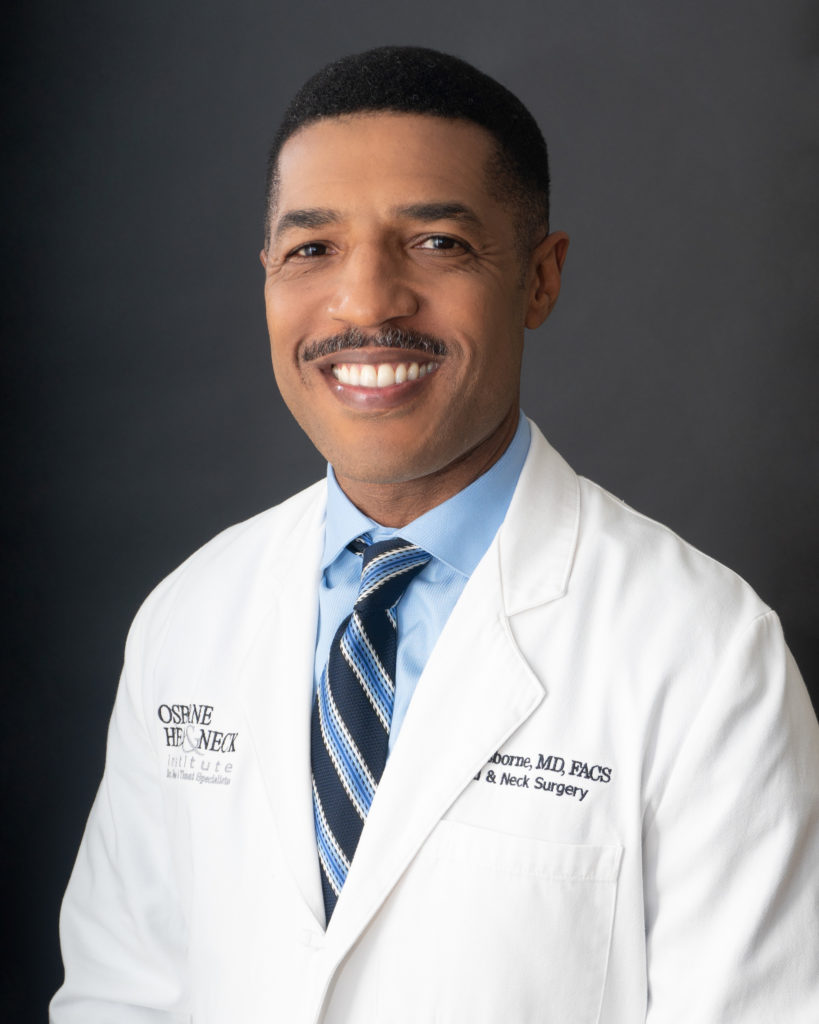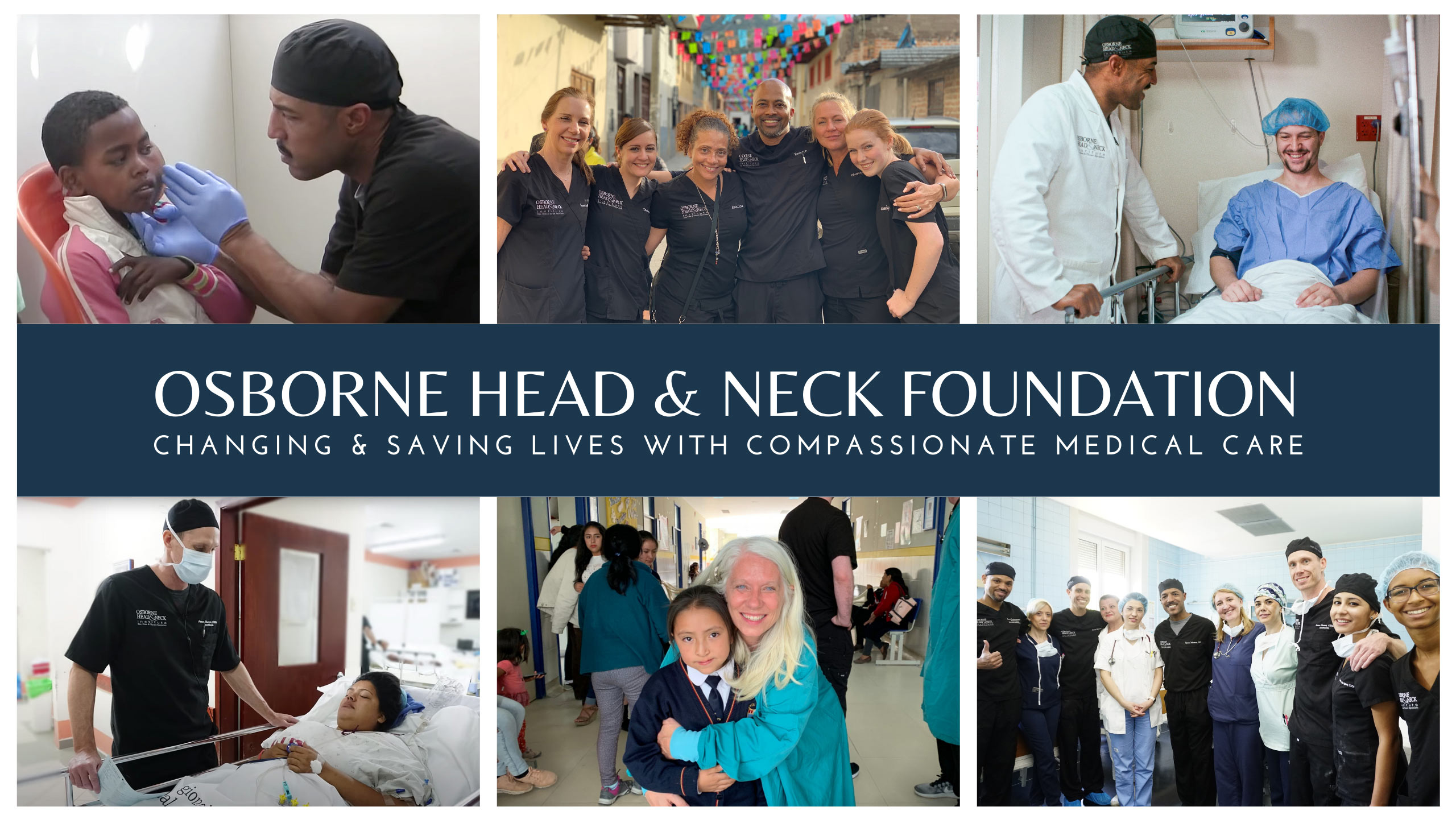– DR. RYAN F. OSBORNE –
Eagle Syndrome Specialist
Director of Head and Neck surgery, Osborne Head and Neck Institute
Eagle Syndrome / Styloid Syndrome
Compassionate Care for this Rare Condition
Eagle Syndrome (ES) is sometimes called Styloid Syndrome, Stylohyoid Syndrome, or Stylo-Carotid Artery Syndrome. The syndrome was first described by Dr. Watt Weems Eagle an Otolaryngologist (ENT doctor) in 1937.
The hallmark finding in Eagle Syndrome is the presence of an elongated styloid process and or the calcification of the stylohyoid ligament. The styloid process is normally between 2.5-3.0 cm in length. If the styloid process exceeds 3.0 cm it is considered to be elongated.
An elongated styloid is found in approximately 4% of the population, and only a small percentage of that 4% have symptoms. In other words, this is not a common condition most physicians are treating due to the small number of people suffering from Eagle Syndrome.
Brian Burkheiser is the lead singer of grammy nominated rock band I Prevail. For years, he has been suffering from extreme pain in his neck. After visiting numerous doctors, he is finally diagnose with Eagle Syndrome. Due to the lack of information of Eagle Syndrome, Brian had trouble finding a doctor that would believe him. Upon meeting Dr. Ryan Osborne, Brian is relieved that finally there is a doctor that is knowledgeable about his condition. Brian has a styloid process on both sides of his neck, he must undergo two risky surgeries that could ultimately end his career.
Shane, a U.S. Navy Veteran, has an extremely rare condition called Eagle Syndrome which causes him extreme pain. After numerous attempts to find a surgeon within the VA network, Shane is left depressed and forced to search for a doctor who could treat him. Shane seeks the aide of Dr. Ryan F. Osborne and his team to help him get the surgery he so desperately needs. Without any guarantee of whether the surgery will help relieve his symptoms, Shane decides to risk it all, for chance to have a better quality of life.
Kevin, an information security consultant by day, and a racing enthusiast by night suffers from Eagle’s Syndrome. Kevin has experienced terrible neurological symptoms and seeks a way to feel whole again. Having gone to Dr. Osborne to remove the styloid process on one side, he returns to have surgery on the other side.
Allen Edwards is a renowned hairstylist who created the iconic hairstyle for Farrah Fawcett in Charle’s Angels. After years of being misdiagnose, Allen discovers that he has Eagle Syndrome. His symptoms have been causing him extreme pain and interfering with his daily life. Allen seeks treatment from Dr. Ryan Osborne for his Eagle Syndrome.
Imagine you lost your voice tomorrow, what would you say today? Nora tells the story of how she woke up one morning with a painful rare disease that caused a voice loss for years. She uses her limited speech function to highlight the power of one of our greatest gifts: our voice. Find more info here: https://www.norasophie.at/. Nora Sophie is a word-lover and inclusion-advocate for chronically ill/ disabled people, as she got a painful rare disease over night that caused a longterm voice loss. Without being able to speak, she became the voice for many patients suffering in silence. Accidentally she discovered the magic of writing and encourages others in a poetic way. This talk was given at a TEDx event using the TED conference format but independently organized by a local community.
What causes Eagle Syndrome?
The cause of Eagle Syndrome is poorly understood. The most accepted theories are trauma related. This may be from external trauma or from the trauma associated with surgery such a tonsillectomy. However, many patients report no such history of trauma.
What are the symptoms of Eagle Syndrome?
The symptoms associated with ES generally fall into one of three categories:
- Vaso-occlusive
- Neuropathic
- Pharyngeal
Vaso-occlusive symptoms arise from compression of the internal jugular vein or carotid artery. This can lead to:
- Headaches
- Dizziness
- Confusion
- Lightheadedness
- Changes in vision
Neuropathic symptoms arise from compression of cranial nerves. This can lead to:
- Headaches
- Neck pain
- Facial pain
- Ear pain
Pharyngeal symptoms arise from contact of the pharyngeal musculature with the elongated styloid process or calcified stylohyoid ligament. This can lead to:
- Foreign body sensation (feeling like something is stuck in the throat)
- Painful movement of the tongue
- Dysphagia
- Pain when turning the head to one side
Because of the wide variety of symptoms patients often see multiple specialists in an effort to get diagnosed. Common specialists patients are referred to initially are: primary care physician, dentist, neurologist, otolaryngologist, pain management, and psychiatrist.
This leads to a broad list of potential diagnoses that need to be excluded. Here is a list of some of these:
- Dental malocclusion
- TMJ Syndrome
- Glossopharyngeal neuralgia
- Trigeminal neuralgia
- Chronic tonsillitis / pharyngitis
- Thyrohyoid Syndrome
- Cluster Headaches
- Temporal Arteritis
Patients are frequently misdiagnosed, and see many physicians which begins to induce anxiety and at times depression. This can lead to a vicious cycle and in severe cases may cause patients to entertain thoughts of suicide.
What is the treatment for Eagle Syndrome?
Once the correct diagnosis is made patients can move forward with treatment. Depending on the severity of symptoms and medical history patients may be suited for medical management.
Medical management generally includes the use of one or more of the following: steroids, muscle relaxants, or pain medications.
When medical management will not suffice, surgical therapies should be considered. The surgical therapy is called a “styloidectomy” or “styloid reduction” procedure. These procedures can be performed via an intraoral approach or external approach with or without endoscope assistance.
Surgical management is performed on an outpatient basis and is well tolerated. To date our team has had no complications.

Expert Surgeon
Dr. Ryan F. Osborne
Ryan F. Osborne, MD FACS, is the Director of Head and Neck Surgery at the Osborne Head and Neck Institute (OHNI) and is an internationally-renowned expert in head and neck surgery. His practice is comprised of patients with complex or rare conditions that require surgical intervention. This background is what made him a natural fit to manage patients with Eagle’s Syndrome.
Dr. Osborne completed a fellowship in advanced head and neck surgical oncology under the mentorship of world-renowned expert, Thomas Calcaterra, MD, at UCLA Medical Center. This training requires a surgeon to operate on a regular basis around the cranial nerves and large vascular structures such as the internal jugular vein and carotid artery. These are the same critical structures that are being affected in Eagle’s Syndrome. Dr. Osborne takes a very pragmatic approach to the when deciding on the best option for treatment for his patients with Eagle’s Syndrome. Constantly considering the risks vs benefits of each potential intervention.
dr. OSBORNE is THE FOUNDER OF AND VOLUNTEER surgeon with osborne head & Neck foundation
Our humanitarian projects stretch across five continents, and broadly focus on: improving access to ear, nose and throat health services; head and neck surgical care; mentoring youth leaders; advancing child welfare and development; growing socially and community-conscious businesses.


